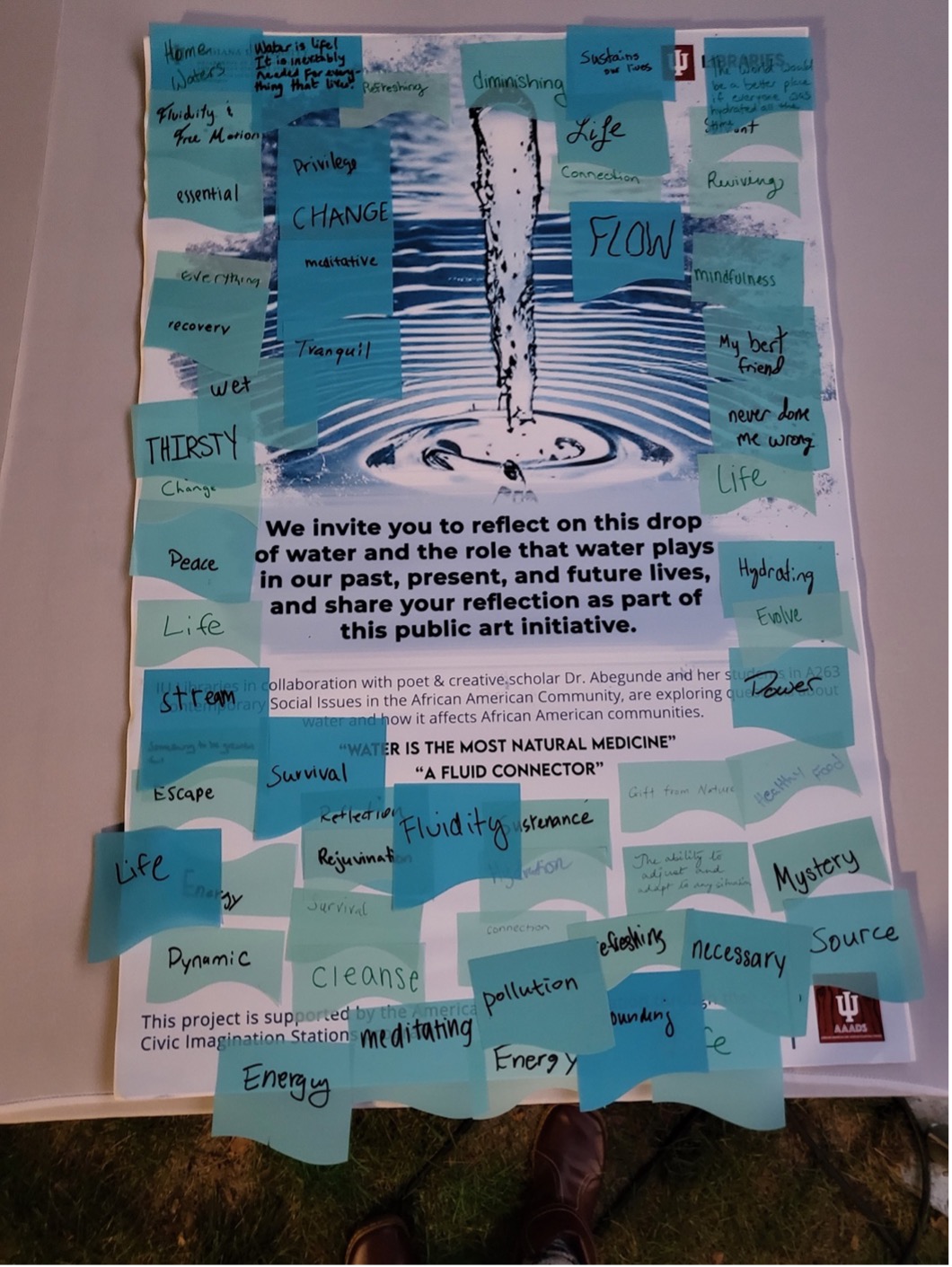Why Water?
Teaching and learning in this way can be challenging if you are unaccustomed to being like water: fluid and flowing, going where there is an opening. But it is also fun. To that end, even with such a heavy subject, we found many reasons to laugh and to share what we love about water. Water comprises at least 60 percent of our bodies and 70 percent of the earth’s surface. The oceans hold at least 96 percent of the earth’s water. Water exists in everything around us, and can take multiple forms. We need water to stay alive, remain healthy, grow crops, and to play. And, because climate change is altering water availability we are forced continually to confront and reflect on our relationship(s) with water.
Water, students said, is a fluid connection, natural medicine. In fact, because water is a common element and need for human beings, librarian Willa Tavernier invited students and community members to answer the question, what does water mean to you.

Access to affordable, clean, safe, usable water for everyone is a big concern of the United Nations (UN). To learn more about UN beliefs and policies on water, we read and critiqued their guidance on water access and Human Rights. We then considered if and how this guidance was utilized in and for Black communities. This meant studying and having dialogue about the histories of Black people in the United States and worldwide: slavery, redlining, Jim Crow, gentrification, land acquisition, medicine, healing, beauty, farming, rest, and much more. After this, our task was to collaborate with each other, the librarians, and the digital humanities staff to determine the best ways to tell these histories – our own included - and to offer possible solutions (immediate and future) to the contemporary social issues in which we were interested.

